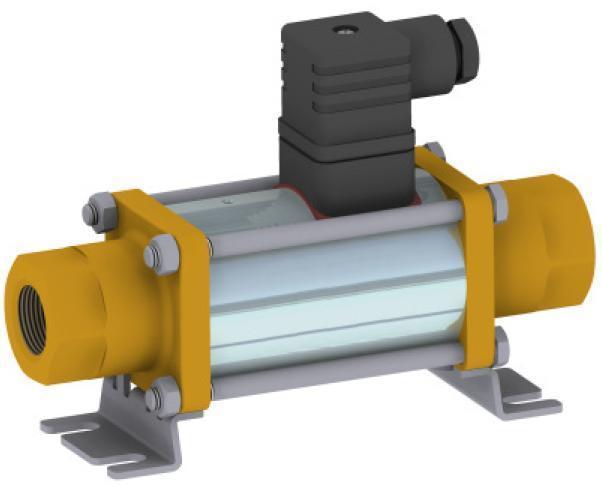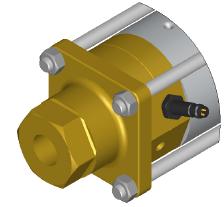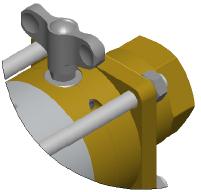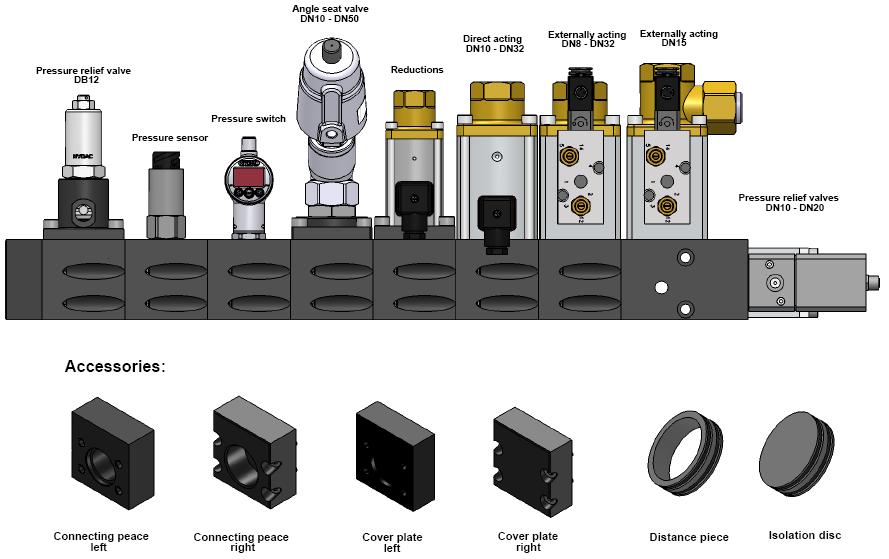News Letter
Sign Up & get 33% off your first order
Enter your preferred name & e-mail to subscribe

This article deals with coaxial solenoid valves, how they work and the benefit of coaxial solenoid valves as compared to other valve types.

|
|
You can see from the schematic on the left-hand side the 2 ports A and P item 1. Item 2 Valve seat Item 3 Plunger Item 4 Magnet / Solenoid Item 5 Plug / DIN Connector Item 6 Spring Item 7 PTFE Tube / Rod seal. |
When power is applied through the connector (1) the solenoid (4) generates a magnetic field which pulls the plunger (3) which is connected to the tube / rod. In the case of a normally closed coaxial solenoid valve pulls the tube away from the seat (2) thus allowing flow from P to A. When power is removed the spring (6) pushes the tube back into its original position against the seal (2) closing the coaxial valve and stopping the flow of media.
Here we have a picture of a 3/2 way coaxial solenoid valve, 1 inlet and 2 outlets, for diverting or exhausting of gas or liquid media. This picture shows a basic coaxial valve without mounting brackets, 1 port on the left-hand side and 1 port on the right-hand side, and the third port facing us. Above the valve you can see a black rectangular box, this is the electrical entry or DIN connector which powers the internal solenoid generating an electromechanical force to operate the valve.
|
As you can see from the picture on the right-hand side. Inlet Port P, Outlet port A (item 1), Exhaust Port R Item 2 Valve seat Item 3 Plunger Item 4 Magnet / Solenoid Item 5 3/2 Way valve seat Item 6 3/2 way adapter fitting Item 7 Spring |
|
When power is applied through the electrical connector the solenoid (4) generates a magnetic field which pulls the plunger (3) and connected tube / rod away from seat (2) allowing flow from P to A, but in the process will seal the other end of the tube laterally against seat (5) preventing flow to R. When power is removed the spring (7) pushes the tube back into its original position against the seal (2) closing the port A and opening seat (5) allowing flow again from Port P to port R.
Coaxial solenoid valves by their lateral / coaxial flow design offer very high flow rates compared to the arduous flow paths of basic solenoid valves. A range of body sizes from 1/4 to 2" thread and flange options to DN80 further enhance the available connecting range of bodies an the internal tube sizes sometimes referred to as orifice are available from DN10 (10mm ID) through to 50mm or more, offering a range of achievable flows to suit many port / connection sizes.
Coaxial solenoid operated valves construction allows the media to be only in contact with the valve body, seals and coaxial internal stainless steel tube so media compatibility is confined to only these three areas, and the tube is made from corrosion resistant 316 stainless steel thus helping further.
Coaxial solenoid valves are typically available in Steel, Brass, AISI304 or AISI316 stainless steel with seal options from PTFE, and elastomer seals NBR, EPDM or FKM which allows combinations to suit most media and environmental applications and requirements.
Coaxial solenoid valves are direct acting, i.e. the plunger / magnetic stainless armature are connected directly to the tube, so when the solenoid is energised the plunger (armature) and mechanically linked tube will move laterally changing the open / closed state of the valve regardless of system pressure. This in turn offers reliable positive Opening and Closing ON/OFF or Diverting control of media flow with the lateral controlling movement offering superior sealing properties and almost guaranteed functional properties which are ideal for critical systems working from vacuum to pressures exceeding 300 bar.
Coaxial solenoid actuated valves will control the flow or liquid, gas or vacuum in both directions, typically in reverse flow the maximum pressure rating is 0 to 16 bar, with correct flow direction the maximum pressure of the valve can be achieved. For example a 270 series coax valve has a working pressure range of 40 bar, this applies with inlet pressure to port P (see above internal structure diaphragm), but with pressure applied to the outlet port for reverse flow the maximum pressure is 16 bar.

The mechanical design of coaxial valves means the lateral movement of the coax tube design can simply be monitored or externally changed by installing simple additional parts during the manufacturing process.
Here on the left we can see an electrical position switch installed one end, offering an option for position Open or position closed signalling. Two switches can easily be installed to offer both Open and Closed position feedback for remote locations or control room monitoring.
Again the mechanical design of coaxial valves means the lateral movement of the coax valve design can simply be altered by simply installing simple parts during the manufacturing process. Here on the right we can see a mechanical over ride device for mechanically opening the coaxial valve even when no power is applied or available. An engineer can simply turn the manual override lever to put the coaxial valve into what would have been the the energised position and the valve will stay until the override position has been returned.
altered by simply installing simple parts during the manufacturing process. Here on the right we can see a mechanical over ride device for mechanically opening the coaxial valve even when no power is applied or available. An engineer can simply turn the manual override lever to put the coaxial valve into what would have been the the energised position and the valve will stay until the override position has been returned.
As coaxial valves are so compact and simplistic by design it is very easy to manifold or sub base mount several 2/2 and 3/2 way normally open and normally closed coaxial valves together on a single manifold. In fact additional control valves can also be installed on coaxial manifolds including externally actuated or pneumatically controlled coaxial and angle seat piston valves, pressure relief valves, pressure sensors, pressure switches, larger and smaller coaxial valves to name but a few.
Find and buy all types of coaxial valves here.

A catalouge of articles covering all aspects of solenoid valves
Enter your preferred name & e-mail to subscribe